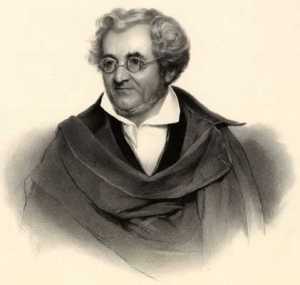
No prizes offered.
Answers on FB later in the week.
What? Has MusiCB3 gone mad? TWO Valentine’s Day posts this year? Actually no. This is about a much more important topic – dating printed music. Now, I know this may not sound wildly exciting, but bear with me; trying to work out when exactly a piece of music was actually written down on paper, or published, sometimes needs the nose of a bloodhound, the detective skills of a Sherlock Holmes, and an inbuilt joy of puzzles.
So, you’ve got a piece of music in front of you, no date is printed on it. Let’s start the dating game…

Date watermark on a Charles Dibdin’ song (MRA.290.75.242)
Copyright Sarah Chapman
With pre-20th century music, it can be a good idea to see if there’s a watermark. Sometimes they’re quite easy to spot, other times they can be tricky or impossible. In most cases they won’t be visible to the naked eye in daylight (especially not at this dull time of year), but will come to life if a torch or a UV light is shone through the paper. Some watermarks are intricate designs, and can be dated quite specifically – many of Bach’s manuscripts have been dated through the range of watermarks on the paper he used (see Wisso Weiss’ catalogue of Bach’s watermarks). Some watermarks are even kinder to the music cataloguer, and are just a simple date. These are how many of the Charles Dibdin songs in our collections have been dated.
What if there’s no watermark, or it’s inconclusive? Well, there are a range of other things you can investigate. Many publishers, especially those who sold music directly from their premises have a helpful address as well as their name printed on the title page. In some cases it can be very easy to narrow down a date quite specifically from an address. For example, you have a work published by Duff & Stewart, which could date from anytime in the mid-nineteenth century. Luckily the address “20 Oxford St., 51 Hanway St.” is listed in Victorian music publishers : an annotated list by John A. Parkinson. This confirms that Duff & Stewart were at the Oxford St. / Hanway St. addresses for just a short time, 1867-68, before moving further down Oxford Street. Before that date Duff had another business partner so it’s highly likely that the work can be dated between those two years.
Plate numbers are especially useful in dating music. These are numbers that were added to the bottom of each lithographic plate when the music was printed (or occasionally just to the title page). Usually different works would have different numbers, and as the numbers were used in sequence they can provide a chronological guide to what was published when. There are useful catalogues available listing plate numbers of individual publishers, or of plate numbers used by publishers divided by country. So, for example, what of the C.F. Peters’ edition of Friedrich Kiel’s Requiem?
In this case, we have several clues. We have a plate number – 4358. If we look this number up in Otto Erich Deutsch’s Musikverlags Nummern, which lists plate numbers of (principally) German and Austrian late 18th / 19th century music publishers, we see that plate number 4344 (close) is listed as having been used in 1862, with plate number 4438 (further away) in 1864. The plate numbers listed should have been verified from another source, so we can be reasonably certain of their accuracy, so this would seem to make it likely that the Requiem was published in 1862 or 1863, certainly no earlier than ’62 or later than ’64.
In this case we have further proof that Kiel’s Requiem was published in 1862, as it was also advertised in the Hofmeister catalogue in October 1862. From 1829 onwards the Leipzig publisher Friedrich Hofmeister published a monthly or bi-monthly catalogue of music that was currently in print, mainly (although not exclusively) in German speaking Europe. Hofmeister, along with Whistling, are both vital sources in dating music of the nineteenth centuries. The Hofmeister catalogue is available for free online and is well worth a browse.
So QED in the case of the Kiel Requiem? Well, not quite. It’s possible, of course, that the edition we have is one that used the same plates but is later, perhaps much later. In this case though there’s a further clue. Currencies in Europe changed and fluctuated throughout the nineteenth century. On the Kiel Requiem, for example, the music is priced 7 Thlr (i.e. 7 Thaler). The use of Thaler tells us straightaway that the publication must pre-date the change to the Mark in 1874. But, thanks to Hofmeister, we can be even more accurate than this. The work is priced at 7 Thaler in the October 1862 edition of Hofmeister, in later editions of the catalogue the price has changed. Therefore summer / autumn 1862 must be the publication date of the edition we have. QED.
MJ




Reblogged this on IAML (UK & Irl) and commented:
Reposted from MusiCB3, the blog of Cambridge University Library Music Collections.
LikeLike
Whittaker Library has also shared this posting today!
LikeLike
Thanks, Karen! It was good to see further useful dating info on the Whittaker Library’s page too – http://whittakerlive.blogspot.co.uk/2016/02/dating-and-identifying-old-sheet-music.html.
LikeLike
Great resources! We reblogged this here: http://www.rism.info/en/home/newsdetails/article/2/the-dating-game.html
Thanks for using a CC-BY license!
LikeLike
Thanks for the re-blog!
LikeLike